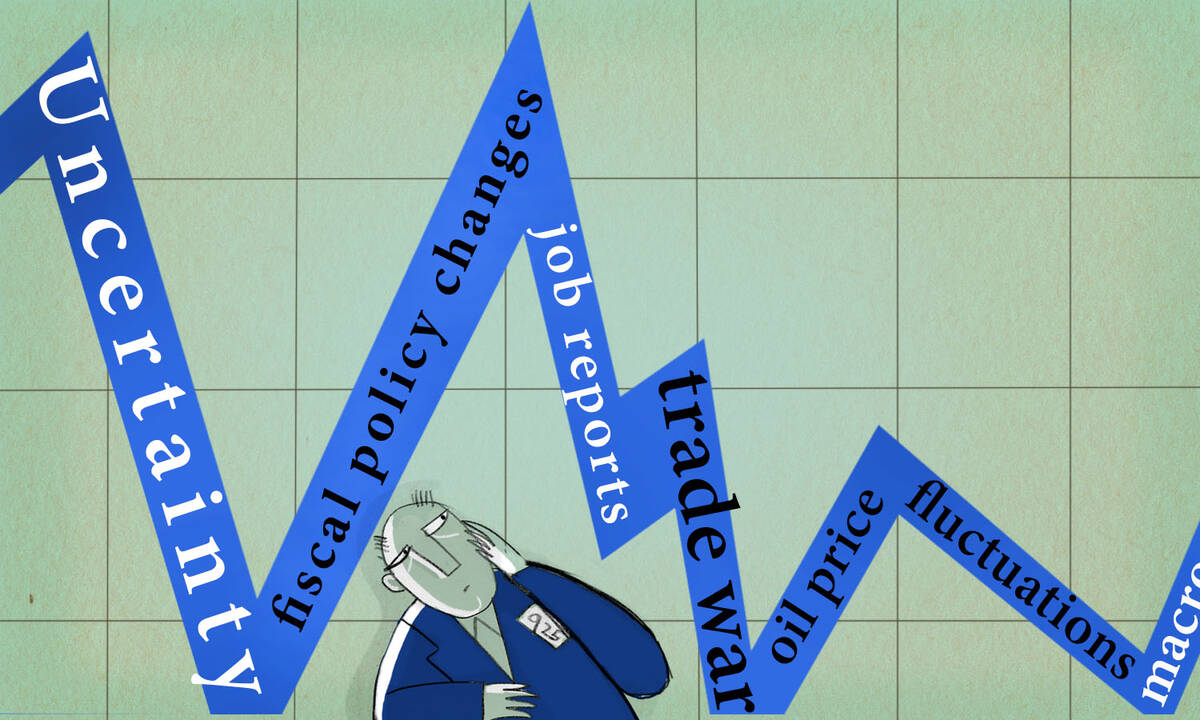The New Reality Of Stock Market Swings: How To Adapt

Table of Contents
Understanding the Causes of Increased Stock Market Volatility
The increased frequency and magnitude of stock market swings are driven by a complex interplay of factors. Understanding these underlying causes is the first step in developing an effective response.
Geopolitical Uncertainty
Geopolitical events significantly impact market sentiment and can trigger dramatic stock market fluctuations. Wars, political instability, trade disputes, and unexpected diplomatic shifts all contribute to market uncertainty.
- Examples of recent geopolitical events and their market impact: The Russian invasion of Ukraine caused significant global market volatility, impacting energy prices and supply chains. The ongoing US-China trade tensions have created uncertainty for businesses operating in both markets.
- Identifying potential geopolitical risks and their potential market consequences: Staying informed about global events through reputable news sources is crucial. Analyzing potential geopolitical risks requires understanding their potential impact on various sectors (e.g., energy, technology, manufacturing) and assessing the likelihood of escalation.
Economic Factors
Economic factors play a dominant role in driving stock market volatility. Inflation, interest rate changes, and recessionary fears are key drivers of market swings.
- Key economic indicators to watch and their influence on market sentiment: Inflation rates (CPI, PPI), interest rate decisions by central banks (Federal Reserve, European Central Bank), GDP growth, unemployment rates, consumer confidence indices are all crucial indicators. High inflation often leads to increased interest rates, which can negatively impact stock valuations.
- Strategies for mitigating economic risk through diversification and hedging: Diversification across different asset classes (stocks, bonds, real estate) reduces the impact of economic downturns on your portfolio. Hedging strategies, such as investing in inflation-protected securities, can further mitigate economic risk.
Technological Disruption
Rapid technological advancements can create both opportunities and challenges in the stock market. Disruptive technologies can reshape entire industries, leading to significant shifts in market leadership and valuations.
- Examples of disruptive technologies and their influence on specific market sectors: The rise of artificial intelligence (AI) is transforming various sectors, from healthcare to finance. The growth of e-commerce has significantly impacted traditional retail businesses.
- Identifying and capitalizing on opportunities presented by technological change: Researching emerging technologies and understanding their potential impact on different industries can help identify promising investment opportunities. However, it’s important to carefully assess the risks associated with investing in rapidly evolving sectors.
Developing a Robust Investment Strategy for Volatile Markets
Navigating stock market swings requires a well-defined and adaptable investment strategy. This involves diversification, effective risk management, and a long-term perspective.
Diversification
Diversification is crucial for mitigating risk in volatile markets. By spreading your investments across different asset classes, you reduce the impact of any single asset's underperformance.
- Different asset classes to consider (stocks, bonds, real estate, etc.): A balanced portfolio typically includes a mix of stocks (domestic and international), bonds (government and corporate), real estate (direct ownership or REITs), and potentially alternative investments (commodities, private equity).
- Benefits of international diversification: Investing in international markets reduces your dependence on a single economy, providing protection against regional downturns.
Risk Management
Understanding your risk tolerance is paramount. Risk management involves employing strategies to protect your investments from significant losses.
- Strategies for managing risk (stop-loss orders, hedging techniques): Stop-loss orders automatically sell your investments when they reach a predetermined price, limiting potential losses. Hedging involves using financial instruments to offset potential losses in one investment with gains in another.
- Role of regular portfolio reviews and adjustments: Regular reviews (at least annually, or more frequently during periods of high volatility) allow you to assess your portfolio's performance, rebalance your assets, and make adjustments based on changing market conditions and your own financial goals.
Long-Term Investing
A long-term perspective is essential for success in investing. Short-term market fluctuations should not dictate your long-term investment strategy.
- Benefits of long-term investing: Over the long term, the market tends to trend upwards, allowing your investments to grow despite short-term setbacks.
- Emotional discipline required: Staying invested during market downturns requires discipline and the ability to resist the urge to panic sell.
Adapting Your Behavior During Stock Market Swings
Your behavior during periods of market volatility can significantly impact your investment outcomes. Maintaining emotional discipline, staying informed, and seeking professional advice are crucial.
Emotional Discipline
Avoid panic selling during market downturns. Fear and greed are powerful emotions that can lead to poor investment decisions.
- Strategies for managing fear and greed in investing: Develop a well-defined investment plan and stick to it. Avoid making impulsive decisions based on short-term market movements. Regularly review your financial goals to remind yourself of your long-term vision.
- Benefits of a disciplined approach to investing: A disciplined approach leads to better investment outcomes over the long term, minimizing emotional losses.
Staying Informed
Staying updated on market news and economic trends is crucial, but it’s vital to use reliable sources.
- Reliable sources of financial information (reputable financial news outlets): Seek information from reputable financial news sources, economic research firms, and government agencies.
- Dangers of relying on unreliable or biased information: Be wary of sources that promote unrealistic returns or offer unsubstantiated investment advice.
Seeking Professional Advice
Seeking professional advice from a qualified financial advisor can be particularly beneficial during periods of market volatility.
- Qualities to look for in a financial advisor: A good financial advisor will understand your financial goals, risk tolerance, and investment timeline. They should provide personalized advice and be transparent about their fees.
- Role of a financial advisor in helping you navigate market volatility: A financial advisor can help you develop a robust investment strategy, manage risk effectively, and make informed decisions during turbulent market conditions.
Conclusion
The new reality of stock market swings demands a proactive and adaptable investment strategy. By understanding the causes of volatility, developing a robust and diversified portfolio, managing risk effectively, and maintaining emotional discipline, you can navigate these turbulent waters and achieve your long-term financial goals. Don't let fear dictate your decisions; instead, use this knowledge to effectively manage your investments and continue to grow your wealth despite the inevitable stock market swings. Remember to regularly review your investment strategy and consider seeking professional advice to ensure you are well-prepared to adapt to the ever-changing landscape of stock market fluctuations. Start building your resilient investment plan today and learn how to effectively navigate stock market swings.

Featured Posts
-
 Your 90s Memories Featured In Our Gallery
Apr 25, 2025
Your 90s Memories Featured In Our Gallery
Apr 25, 2025 -
 Sadie Sinks Spider Man 4 Casting Evidence From The Films New Title
Apr 25, 2025
Sadie Sinks Spider Man 4 Casting Evidence From The Films New Title
Apr 25, 2025 -
 Anchor Brewing Companys Closure A Legacy Concludes After 127 Years
Apr 25, 2025
Anchor Brewing Companys Closure A Legacy Concludes After 127 Years
Apr 25, 2025 -
 Steve Mongo Mc Michael Dead At 67 Remembering The Chicago Bears Icons Life And Career
Apr 25, 2025
Steve Mongo Mc Michael Dead At 67 Remembering The Chicago Bears Icons Life And Career
Apr 25, 2025 -
 Roche Q1 2024 Sales Results Pipeline And Performance Analysis
Apr 25, 2025
Roche Q1 2024 Sales Results Pipeline And Performance Analysis
Apr 25, 2025
